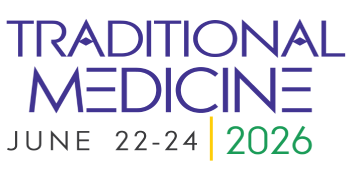Title : Description of the medicinal use of plants by diabetic patients at the National Obesity Center, Yaounde, Cameroon
Abstract:
Relevance: Diabetes mellitus is a group of metabolic diseases characterized by hyperglycemia resulting from defects in insulin secretion, insulin action, or both. In Cameroon, diabetes has a rising prevalence due to urbanization and lifestyles modifications. Access to conventional diabetes care is still an issue, and some diabetics rather use traditional remedies made up of plants. These plants contain metabolites that can be useful to improve diabetes care. Despite the fact that the use of traditional remedies is widespread in Cameroon, this practice is still insufficiently described in our clinics and hospitals. Therefore, we decided to describe the medicinal use of plants by diabetic patients followed at the National Obesity Centre, located in Yaounde, the capital of Cameroon.
Methods: A cross-sectional survey was carried out at the National Obesity Centre from October 2021 to February 2022. The study was presented to all adult diabetic patients. Those willing to participate were surveyed through a questionnaire in French or in English. Sociodemographic data and data related to the medicinal use of plants were collected through the questionnaire. Medical data were retrieved from the medical files of participants.
Results: 202 diabetics were surveyed, including 98 men and 104 women. The mean age was 58.97±12.19 [22; 91] years. Exception made of 05 non-Cameroonian, our participants were native from 09 over 10 regions of the country. Despite the fact that 70.3% of the participants lived in an urban area, 97% of them spoke at least 01 one mother tongue: our participants were well impregnated with their native cultures. The prevalence of the use of medicinal plants in our study was 55.9%. Surroundings – family, friends and/or colleagues – were the main source of information on medicinal plants. The reasons to use plants that were given included improvement of glycemic control, hope of healing from diabetes, concerns about cost and toxicity of conventional drugs. The reasons not to use medicinal plants that were given included concerns on their efficacy and on their renal toxicity, and bans given by medical staff. The participants who used medicinal plants have listed 75 plants species. Amongst them 39 plants were purely medicinal, e.g Alstonia boonei De Wild. The remaining 36 plants were used for nutrition and for medicinal purposes. In some cases, the edible part of the plant was also the part used as traditional remedies, e.g. fruits of Tetrapleura tetraptera and leaves of Cymbopogon citratus. In other cases the edible part of the plant was different from the one used for medicinal purposes. Some examples are Mangifera indica and Annona muricata: the fruits are edible, whereas the leaves are used for medicinal purposes. The most commonly used plant was Vernonia amygdalina. Analysis are ongoing to study the association between medicinal plants consumption and sociodemographic, clinical, and biological data, and with adherence to conventional diabetes care in our sample.
Conclusion: A better knowledge of plants used in traditional antidiabetic remedies can be valuable for patients, for clinicians and for researchers to improve diabetes care.




